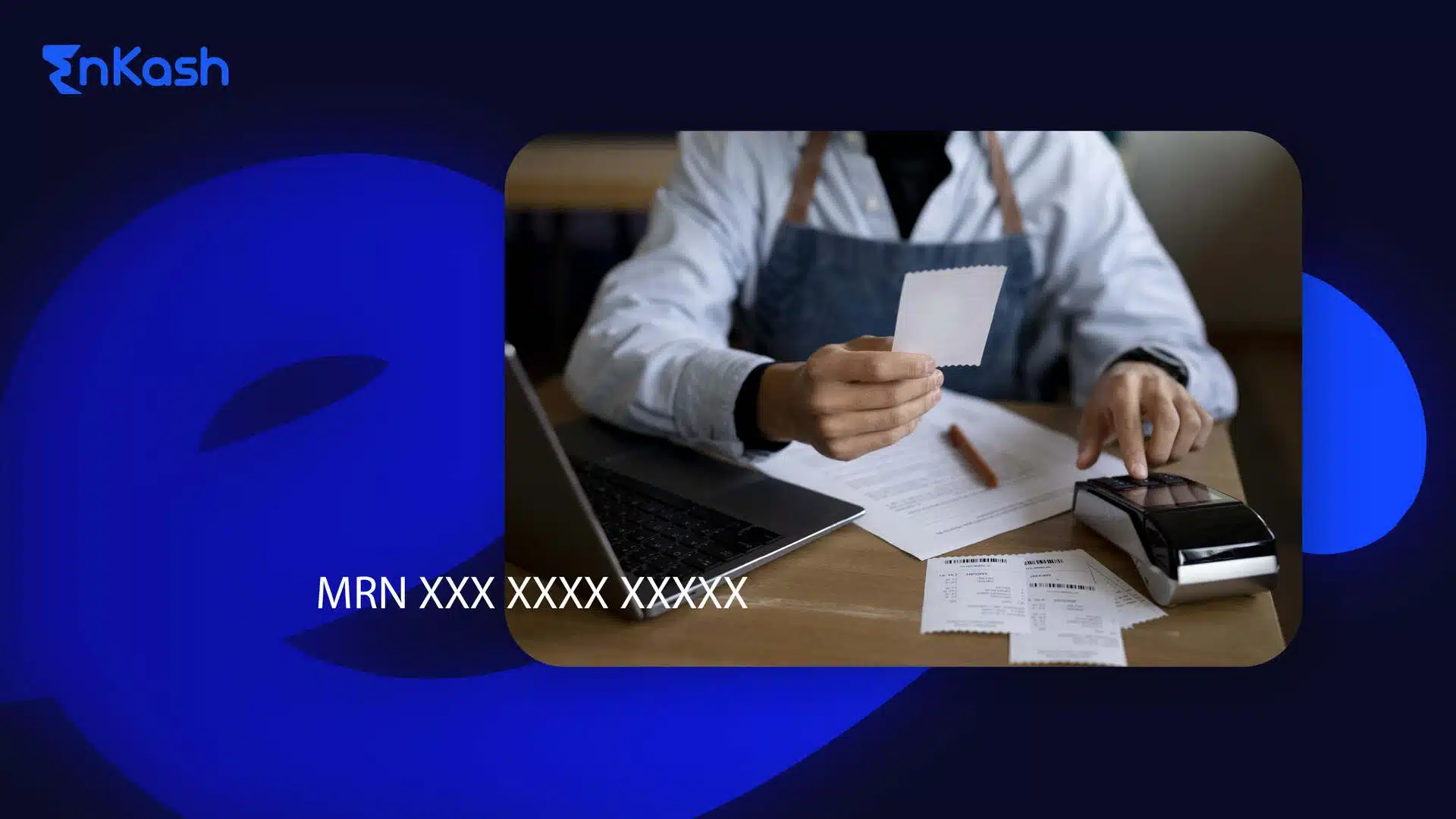What Is a Vostro Account?
A Vostro account helps a foreign bank hold money in the local currency of another country through a local bank. It allows payments to move smoothly between nations without the foreign bank needing its own branch there.
Vostro Account Meaning
The term Vostro means “your” in Latin. In banking, it refers to “your account with us.” It is an account that a local bank maintains for a foreign bank in its own currency. From the local bank’s view, the balance belongs to the foreign bank and is treated as a liability. For the foreign bank, it represents funds it owns but holds abroad.
This setup makes it easier to manage trade payments, remittances, and cross-border settlements. It keeps transactions simple and compliant under regulated banking systems.
How a Vostro Account Works
When two banks in different countries need to send or receive money, they use this account to settle payments in the local currency. Suppose a foreign bank wants to pay local suppliers for its clients. Instead of transferring funds every time, it deposits money into a Vostro account opened with a local bank. The local bank then processes payments directly from that balance.
This arrangement cuts delays and exchange issues, making international trade faster and more reliable.
Main Features of a Vostro Account
- Maintained by a local bank for a foreign bank.
- Denominated in the local currency of the host country.
- Used for inward payments, trade settlements, and remittances.
- All transactions are verified and recorded through SWIFT systems.
- Subject to KYC and anti-money laundering compliance rules.
A Vostro account strengthens financial ties between banks and supports smooth foreign exchange operations. It forms the backbone of international payment systems by making settlements secure and transparent.
Loro Account
A Loro account may seem like a distant concept, yet it has shaped how banks move money across borders. The word Loro comes from Latin and means “their.” “It refers to a situation where one bank manages funds belonging to another bank, with the help of a third bank. Think of it as a trusted intermediary channel for transactions when direct banking relationships are unavailable.
What Is a Loro Account
A Loro account represents “their account with you.” It is used when a bank needs to make or receive payments in another country but lacks a direct relationship with the foreign bank involved. Instead of creating a new link, it relies on another bank that already has that access. For example, Bank A maintains accounts with Bank B overseas. Bank C wants to reach clients through Bank B but has no direct tie. Bank A allows Bank C to move funds through its existing connection. Those funds are recorded in their account or the Loro account. This way, the transaction completes safely without every bank setting up its own foreign branch.
Each movement passes through layers of verification. Every institution in the chain must record, confirm, and balance its books carefully. Without this discipline, international settlements would lose stability.
How a Loro Account Works
Imagine three banks in three countries.
Bank A holds a Nostro account with Bank B for foreign currency transactions. Bank C wants to send a payment to a client handled by Bank B. Since it has no account there, it asks Bank A to do it on its behalf. Bank A refers to those funds as belonging to Bank C. This becomes the Loro account relationship.
The setup makes global transfers possible even for smaller institutions. It saves cost, reduces administrative work, and gives regional banks access to international systems they might otherwise lack.
Why Loro Accounts Are Rare Today
Banking technology has transformed the landscape. Real-time settlements and platforms such as SWIFT allow banks to connect directly instead of routing through multiple intermediaries. The need for Loro accounts has declined, but the idea still matters.
It explains how international networks were once built through cooperation and trust. Every modern payment channel, no matter how advanced, still relies on that same foundation. Understanding the Loro account gives insight into how global banking evolved from handwritten ledgers to instant digital confirmations.
Difference Between Vostro and Nostro Account
A Vostro account and a Nostro account describe the same banking relationship, but each reflects a different point of view. It is like looking at the same transaction from opposite sides of the window. Both exist to make cross-border payments simple, but the way they are recorded and used is what sets them apart.
Core Conceptual Difference
A Vostro account means “your account with us.” It is the account a local bank maintains for a foreign bank in its own currency. The same balance, when viewed by the foreign bank, becomes a Nostro account, which means “our account with you.”
In other words, what one bank calls a liability, the other records as an asset. Both describe the same funds but from different perspectives. This duality keeps the books of both banks aligned and ensures every movement of money matches on either side.
Accounting Viewpoint
From an accounting angle, a Vostro account appears as money the local bank owes to the foreign bank. It is shown as a liability because the funds do not belong to the local institution. For the foreign bank, the same balance appears as a Nostro account, an asset it holds abroad.
The distinction is small in words but vital in practice. It affects how banks track settlements, reconcile ledgers, and meet international reporting standards.
Difference Between Vostro and Nostro Account
Basis of Difference |
Vostro Account |
Nostro Account |
Meaning |
“Your account with us” |
“Our account with you” |
Held By |
Local bank for a foreign bank |
A domestic bank with a foreign bank |
Currency Type |
Local currency |
Foreign currency |
Accounting Nature |
Liability for the local bank |
Asset for the maintaining bank |
Purpose |
Handles inward payments and collections |
Manages outward remittances and settlements |
Each entry in the table shows how one side’s record becomes the other’s reflection. It is a mirrored system that keeps cross-border transactions balanced.
Practical Implications in Banking Operations
The difference between Vostro and Nostro accounts may sound technical, but it guides how money moves across borders every day. Banks use these accounts to settle import and export bills, manage foreign currency holdings, and serve clients trading internationally. Without this mirrored record-keeping, reconciling thousands of transactions across currencies would be nearly impossible.
Every global payment, whether for goods, services, or remittances, runs on this invisible pairing. When the foreign bank debits its Nostro account, the local bank credits its Vostro account, and the circle closes. That balance is what keeps international banking precise and trustworthy.
Nostro and Vostro Account Example
It is easier to grasp these terms when you see them in action. The idea behind Nostro and Vostro accounts becomes clear once you follow how banks actually use them to move money.
Example 1 – Trade Settlement
Imagine a company that imports machinery from another country. The buyer’s bank is Bank A, and the seller’s bank is Bank B. Bank A needs to pay the seller in foreign currency. To do that, it uses its Nostro account with Bank B.
Here is what happens. Bank A already keeps money in that account in the foreign currency. When payment is due, Bank A instructs Bank B to release funds to the seller. Bank A’s balance decreases, and the exporter receives payment through Bank B. For Bank B, the same transaction is reflected in its Vostro account, which records funds it holds on behalf of Bank A.
So, one account shows an outflow, the other an inflow, yet both record the same exchange. The process looks simple on paper but involves strict documentation and coordinated messages sent through secure banking systems.
Example 2 – Remittance Transaction
Now, think of an individual who wants to send money abroad. Suppose the sender holds an account in a domestic bank, and the receiver uses a foreign bank. When the sender initiates the transfer, the domestic bank debits its client’s account and settles the payment through its Nostro account with the foreign bank.
The foreign bank credits that amount to the receiver’s account. On its side, it records the same movement under the Vostro account that it maintains for the domestic bank. Both banks then reconcile their books at the end of the day.
Every cross-border payment follows this mirrored pattern. The Nostro account helps send money out, and the Vostro account makes it possible to receive it. Without this dual structure, global banking would lack the precision that keeps international finance functioning without interruption.
How Vostro, Nostro, and Loro Accounts Work Together
Each of these accounts, Vostro, Nostro, and Loro, plays a part in how banks move money across borders. They belong to the same system but show the same funds from different angles. Together, they help banks keep global transactions steady and accurate.
Inter-Relationship
Think of them as three different ways of describing one relationship.
A Nostro account means “our account with you.”
A Vostro account means “your account with us.”
A Loro account means “their account with you.”
Each term depends on the perspective of the bank involved in the transaction. What one bank calls a Vostro, another sees as a Nostro, and a third might record as a Loro. It is the same movement of money but interpreted differently in each bank’s books. This mirrored understanding keeps international banking transparent and organized.
Tri Bank Flow Example
Imagine three banks in three countries. Bank A holds a Nostro account with Bank B to handle payments in foreign currency. Bank C needs to pay a client through Bank B but has no direct tie with it. Bank A allows Bank C to use its connection, and that transaction becomes a Loro account entry for Bank A. Bank B records the same movement under the Vostro account it maintains for Bank A.
Each such payment follows a structured trust-based settlement chain. Each participant records the same amount differently, and those entries together create a balanced system.
Reconciliation Process
At the end of the day, every bank checks its books. They match credits, debits, and balances with their counterparts. SWIFT messages act as confirmation that each side has recorded the same result. If any mismatch appears, it is corrected immediately.
This daily verification keeps the global financial system safe. Without Vostro, Nostro, and Loro accounts, international banking would lose its rhythm and reliability. These structured records ensure secure and accurate cross-border fund movements.
Importance of These Accounts in International Banking
International banking depends on structure and trust. Vostro, Nostro, and Loro accounts together create that structure by keeping money movement transparent and traceable.
- These accounts allow banks to transfer funds between countries without opening branches everywhere.
- They make it possible for global trade payments to settle faster and more securely.
- Each account type helps record transactions clearly, avoiding confusion when currencies and time zones differ.
- They give banks access to foreign currencies needed for import and export settlements.
- Through these accounts, banks manage liquidity and maintain stable cash positions in multiple markets.
- They support foreign exchange operations by holding balances in different currencies.
- Clear separation of Vostro and Nostro accounts ensures every credit in one bank’s books has a matching debit in another’s.
- Central banks track these balances to regulate international money flow and maintain financial stability.
- They strengthen cross-border relationships by creating dependable payment channels between institutions.
- The system also reduces the risk of transaction errors by maintaining verified records through SWIFT communications.
- With these accounts in place, even smaller banks can access the global network through correspondent relationships.
- They serve as a foundation for compliance with international laws such as KYC and anti-money laundering regulations.
- The existence of Vostro, Nostro, and Loro accounts keeps international banking organized, predictable, and legally sound.
Modern Developments and Trends
Banking has changed faster in the past decade than in any other period. Yet the idea behind Vostro, Nostro, and Loro accounts remains at the heart of global payments. What has evolved is the way these accounts are managed and connected.
- Modern banks now rely on real-time systems for settlement instead of waiting for end-of-day reconciliation.
- The launch of SWIFT gpi has made international payments faster and more transparent. It allows banks to track every transaction step from initiation to confirmation.
- Digital platforms have reduced paperwork and delays that were once common in cross-border payments.
- Fintech companies have entered this space by offering automated tools that manage Nostro and Vostro account balances.
- Blockchain technology is being tested for international settlements. It can record payments instantly, reducing the need for several intermediary banks.
- Some central banks are exploring digital currencies that could change how these accounts are maintained in the future.
- Governments in several regions have allowed special Vostro accounts for trade in local currencies. These arrangements help bypass foreign exchange barriers and promote direct settlements.
- Artificial intelligence now assists banks in reconciling entries, identifying mismatches, and flagging errors before they become disputes.
The overall shift is toward speed, transparency, and accuracy while maintaining the same core principles of correspondent banking.
Conclusion
Nostro and Vostro accounts form the quiet base of international banking. Every payment that crosses borders depends on their balance and accuracy. A Vostro account shows money a local bank holds for a foreign partner, while a Nostro account shows the same funds from the other side. Together, they make sure every transaction finds its match.
The Loro account adds another layer, linking banks that would otherwise stay disconnected. Technology may have made transfers faster, but the structure remains the same. These accounts still represent trust between institutions and the discipline that keeps money flowing safely across countries. The system works quietly, yet its presence shapes every trade, every remittance, and every line of credit around the world.
FAQs
1. What is a Vostro account in India?
A Vostro account in India allows a foreign bank to hold funds in Indian rupees with a domestic bank. It enables cross-border trade settlements without opening a local branch.
2. Why do banks prefer using Nostro and Vostro accounts for international settlements?
Banks use these accounts to avoid opening branches in every country they operate in. A Nostro account helps manage foreign currency payments, while a Vostro account allows them to receive funds locally. This system reduces costs, ensures quicker settlements, and maintains accurate records across currencies and time zones.
3. How does a Nostro account support foreign exchange trading?
A Nostro account lets banks hold balances in foreign currencies, which they can use to buy or sell currency pairs directly. This helps traders execute forex deals instantly without waiting for fund transfers. It also allows banks to hedge against exchange rate risks and maintain liquidity for global transactions.
4. Who regulates Nostro and Vostro accounts in India?
The Reserve Bank of India (RBI) regulates these accounts under FEMA and foreign exchange guidelines.
5. Who regulates Nostro and Vostro accounts in cross-border banking?
Central banks and financial regulators oversee these accounts to maintain transparency and prevent misuse. They issue guidelines on documentation, currency limits, and compliance checks. Each participating bank must follow local laws as well as international standards on anti–money laundering and foreign exchange management to keep transactions clean and traceable.
6. Can a Nostro account be opened in multiple currencies?
Yes, a bank can maintain more than one Nostro account, each in a different currency. For example, a local bank may hold one in dollars, another in euros, and a third in yen. This flexibility helps handle trade across regions and makes conversions faster for customers dealing in multiple markets.
7. How are Nostro and Vostro account balances reconciled?
Banks exchange daily statements through SWIFT to confirm credits, debits, and closing balances. Each entry on one side must match exactly with the opposite record on the other side. This verification process ensures no duplicate or missing transactions and helps maintain consistent global financial records between partner banks.
8. Why is a Vostro account important for foreign remittances?
A Vostro account lets a foreign bank receive money in the local currency without operating directly in that country. When someone sends funds from abroad, the domestic bank credits the receiver through that account. This keeps remittance transfers quick, compliant with regulations, and free from unnecessary conversion delays.
9. How do Nostro and Vostro accounts impact trade finance?
These accounts make trade finance smoother by enabling direct settlements between importers, exporters, and their banks. The Nostro account handles outgoing payments for imports, while the Vostro account manages incoming funds from exports. This structure helps avoid double conversions and ensures both sides settle their dues efficiently.
10. Are Nostro and Vostro accounts still relevant in digital banking?
Yes, they remain vital even with modern payment platforms. Digital systems change the way transactions are executed, but not the underlying process. Nostro and Vostro accounts still serve as the foundation that allows international money to move securely between institutions, regardless of how fast or digital the system becomes.
11. How do banks reduce risks associated with maintaining Nostro accounts?
Banks control risk by choosing trusted foreign partners, limiting currency exposure, and conducting regular audits. They use secure communication systems for all transfers and maintain sufficient liquidity buffers. These measures protect funds in Nostro accounts and ensure settlements continue smoothly even during market fluctuations.
12. What role does technology play in managing Nostro and Vostro accounts today?
Technology automates reconciliation, detects mismatches instantly, and provides real-time visibility of balances. Artificial intelligence tools now forecast liquidity needs, while blockchain systems record cross-border transfers securely. These advances make Nostro and Vostro operations faster, safer, and far more transparent than in traditional correspondent banking systems.
13. How are Nostro and Vostro accounts used in SWIFT transactions?
These accounts form the foundation of SWIFT-based correspondent banking. SWIFT messages confirm debits and credits between banks.








